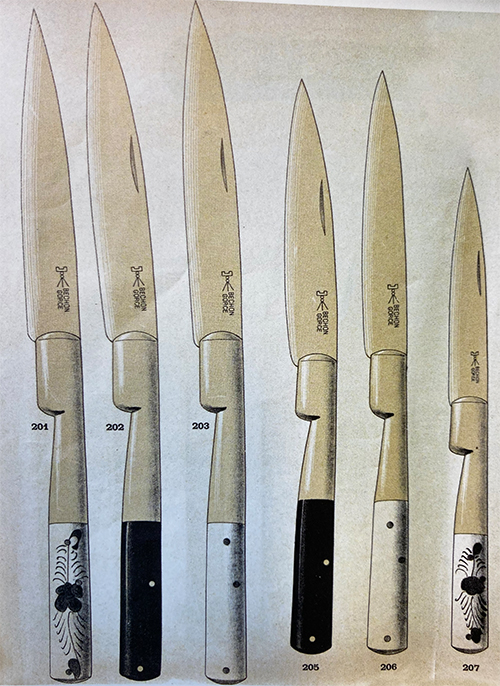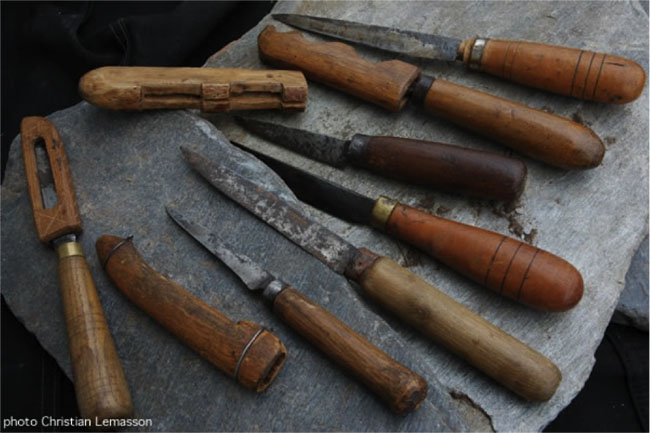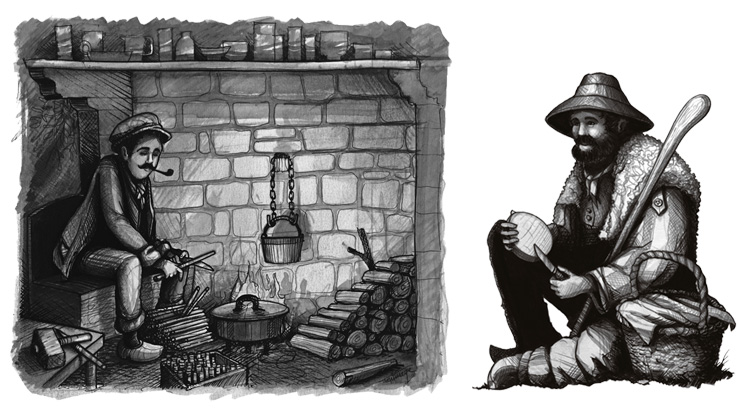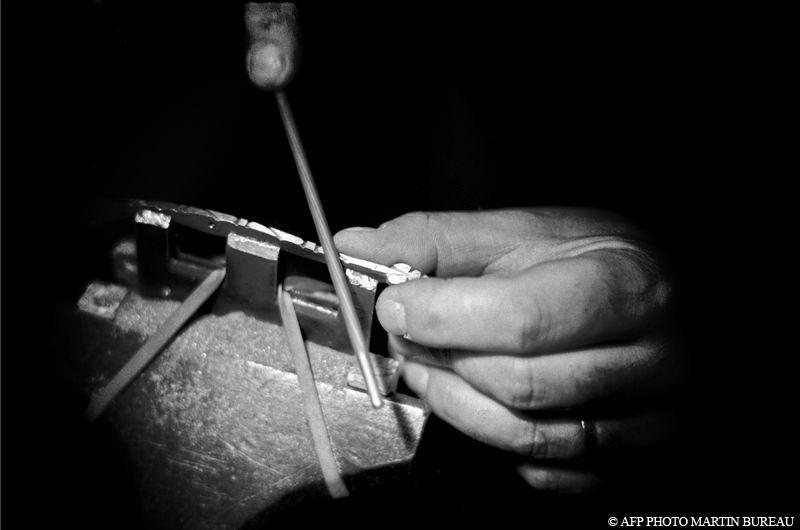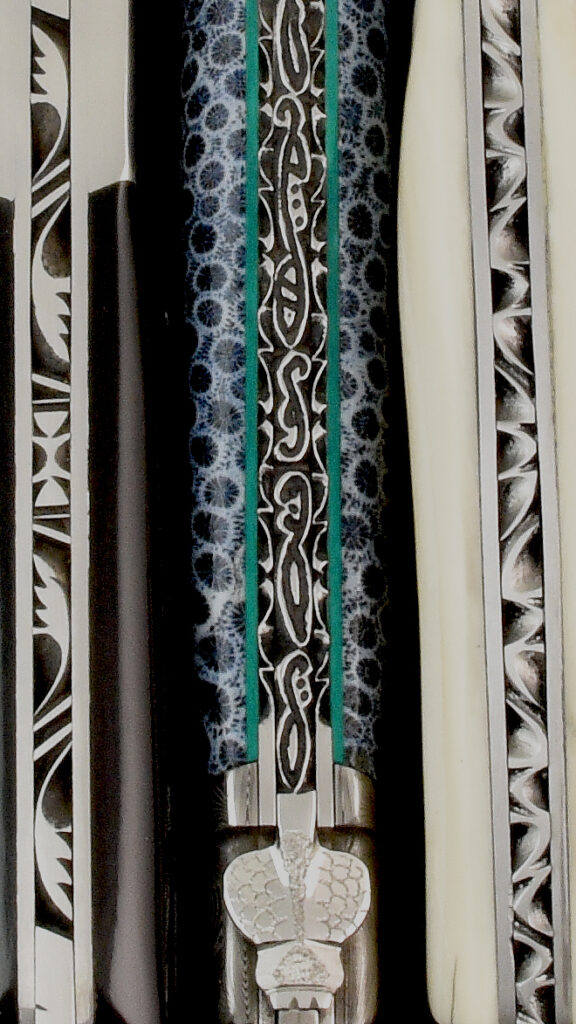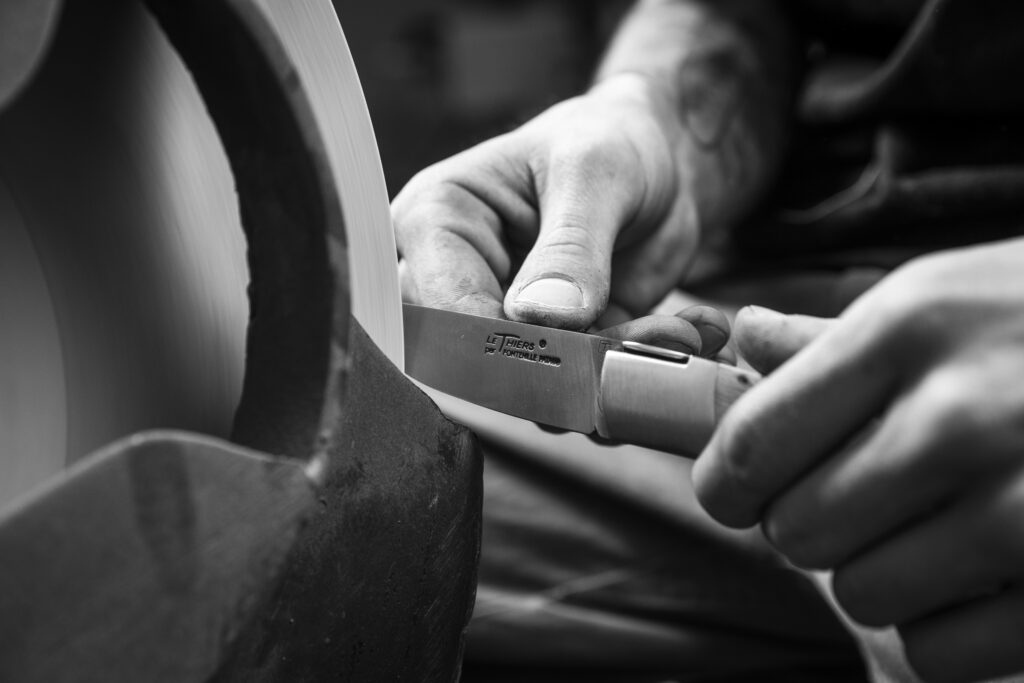Our cutlery workshop was created and is still located in the town of Thiers since 1920. This city is the capital of the French cutlery, two-thirds of knives produced in France for the pocket, kitchen or table are manufactured by Thiers companies and its region. Expertise cutlers Thiernois draws its inspiration from a tradition that dates back more than six centuries.
More than a city, Thiers is a cutlery basin. All the professions around the cutlery are represented there: cutlers, blacksmiths, subcontractors, suppliers of raw materials… And for good reason, perched on its promontory and encircled by a powerful torrent, the Durolle, Thiers has certain predispositions! The power of the torrent is no longer to be proven, it allowed to turn the millstones, the polishers and all other machines with mechanical functioning. Like those in connection with the sandstone quarries located at medium distance. Moreover, the peasants of the surrounding countryside and mountains constituted a workforce of choice. The income from cutlery was a little extra for them on top of the meager income from subsistence farming, especially during the bad season.
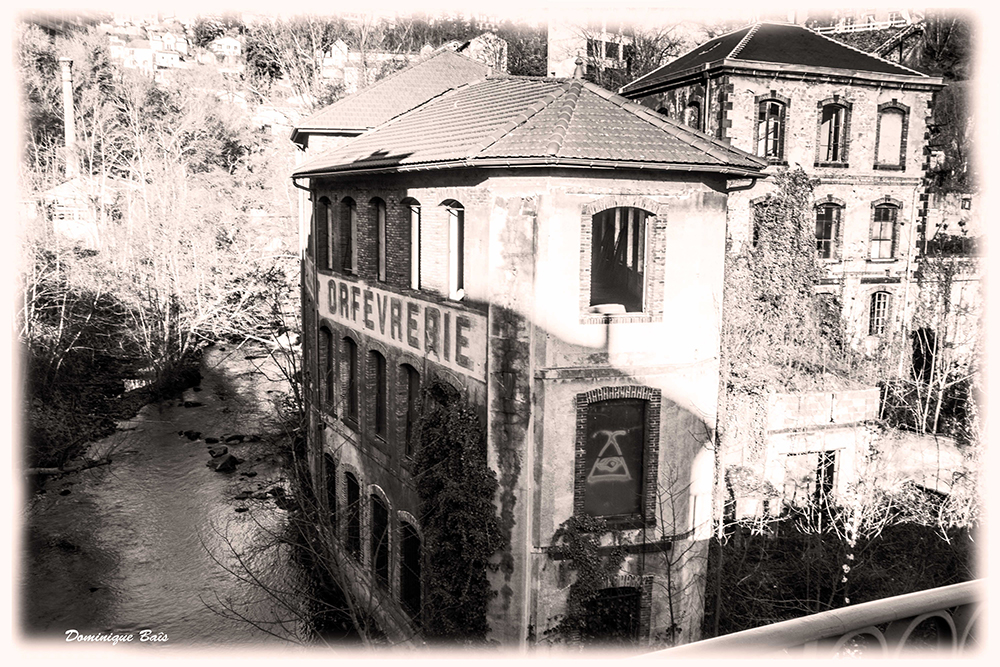
Le Thiers knife is a model filed with the INPI (National Institute of Industrial Property) by the Brotherhood of “Le thiers” knife in July 1994. This brings knife enthusiasts, professionals or amateurs, and work for maintaining a high level of quality in the manufacture of knives as evidenced by the “Jurande” signed by all professional members.
The guild, a quality charter created by the Brotherhood of knife Thiers:
- Cutler must prove five years of activity cutlery ;
- Graphics or prototype introduced by Cutler candidate must receive the approval of the Brotherhood decided by the Board of Jurande ;
- Cutler each participant in the guild pact will put its own brand on the tables of marks and registration numbers imposed by the Brotherhood ;
- To proceed with the manufacture and marketing of Le Thiers knife, Cutler is obliged to appear on the knife brand “Le Thiers” and the stamp “T.” ;
- In any case, Cutler will not perform operations relating to any rank outside Cutler Basin Thiers ;
- Cutler will be required to produce the knife “Le Thiers”, and all its components from quality recognized by the whole brotherhood materials ;
- Cutler will be required to produce the knife “Le Thiers”, and all its components from quality recognized by the whole brotherhood materials.
This famous knife Le Thiers has just celebrated its 20th anniversary this year, today, fifty cutlers make this knife. You can find more details on the website of the Brotherhood of Le Thiers knife.
In Fontenille-Pataud workshop, we also produce our Le Thiers knife for several years now. We chose to create a knife that combines tradition and technical innovation: lightweight knife, easy opening and closing with one hand, liner-lock system with hardened steel ball to keep the blade closed, Teflon mounting ring.
Find our entire production of our Le Thiers folding knives.
